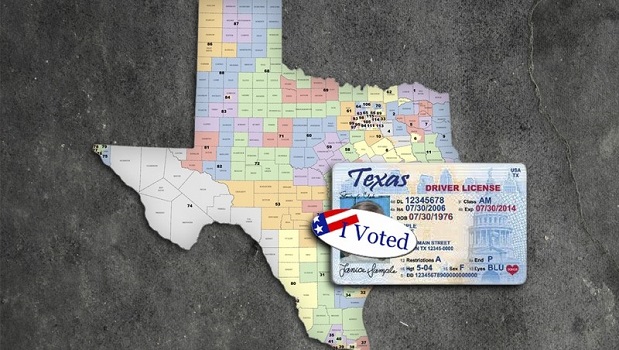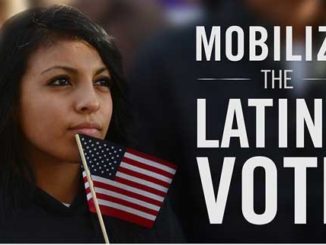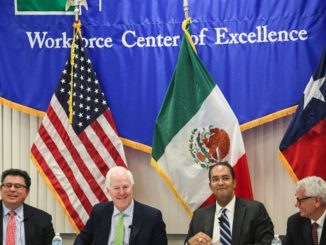
by
Over the past 12 years nearly 20 U.S. states have adopted voter photo identification laws, which require voters to show a picture ID to vote. These laws have been challenged in numerous lawsuits, resulting in a variety of court decisions and, in several instances, revised legislation.
Supporters argue that photo ID rules are necessary to safeguard the sanctity and legitimacy of the voting process by preventing people from impersonating other voters. They say that essentially every U.S. citizen possesses an acceptable photo ID, or can relatively easily get one. Opponents argue that that’s not true; that laws requiring voters to show photo ID disenfranchise registered voters who don’t have the accepted forms of photo ID and can’t get one easily. Further, they say, these laws confuse some registered voters, who therefore don’t bother to vote at all. Opponents also point out that there are almost no documented cases of voter impersonation fraud. Supporters counter that without a photo ID requirement, we have no idea how much fraud there might be.
We conducted surveys in Texas earlier this year to investigate these arguments. Our study found that virtually all eligible non-voters — that is, people who could have but didn’t vote — possessed a valid photo ID. But not many really understood the photo ID regulations.
How did voter ID laws affect turnout?
November 2016 was Texas’s second general election with photo ID rules in force. Through the University of Houston Hobby School of Public Affairs, in February and early March we surveyed a representative sample of Texans who were registered to vote but did not (let’s call them non-voters) in the state’s two highest-profile battlegrounds. In Harris County (population: 4.6 million), which includes Houston, 39 percent of the registered voters did not cast ballots. And in West Texas’s U.S. congressional District 23’s (CD-23) hard-fought race, where incumbent Republican Will Hurd won by only 3,051 votes, 45 percent of registered voters did not go to the polls. The surveys were in English and Spanish.
We were particularly interested in whether non-voters stayed home in part because they didn’t understand what ID they were supposed to show. In 2016 voters who possessed one of the seven state-approved forms of photo ID (either unexpired or which had expired in the prior four years) were required to provide it, but voters who didn’t possess one could vote as long as they filled out a declaration explaining why and presented one of several non-photo supporting documents, ranging from a voter registration certificate to a utility bill. Photo ID was not required to cast a mail ballot, but no-excuse absentee voting in Texas is limited almost exclusively to those 65 and older.
In our surveys, we asked respondents if they had an up-to-date (i.e., not expired) form of each of the state-approved photo IDs that could be used to vote in person. Altogether, 97 percent of registered non-voters in Harris County and 98 percent in CD-23 said they had at least one. When the definition of an acceptable ID is expanded to include state-approved IDs that had expired within the previous four years, the proportion of non-voters with an acceptable form of photo ID rose to 99 percent in Harris County and remained at 98 percent in CD-23.
Almost everyone had a photo ID. Few understood the rules.
But while almost everyone had a photo ID, very few understood what the rules were.
The survey asked our non-voters to listen to three statements and tell us which one most accurately described Texas’s photo ID requirements for voting in November 2016. Only one in five picked the right statement: 21 percent in Harris County and 18 percent in CD-23.
Three out of five non-voters in both jurisdictions (58 percent and 60 percent) believed — wrongly — that all voters had to show a state-approved photo ID to vote in person. That wasn’t true. In fact, people with no photo ID could still vote as long as they signed an affidavit and showed one of several supporting documents, such as a bank statement, government check, paycheck, utility bill or voter registration certificate.
What’s more, three out of four Harris County (74 percent) and CD-23 (75 percent) non-voters wrongly believed only an unexpired Texas driver’s license (the most common form of photo ID held by Texans) could be used to vote in person. Only one in seven non-voters in Harris County and CD-23 knew that in 2016, you could still use your license for four years after it expired.
Latinos were least likely to understand the photo ID rules
Overall, Latinos were significantly less likely to understand the rules correctly than were other groups. In both places, only 15 percent of Latino non-voters understood the photo ID rule in contrast to 24 percent of Anglos and 28 percent of African Americans in Harris County. (CD-23 doesn’t have enough African American non-voters for a statistically valid sample.) Latinos also were significantly more likely to say the photo ID rules were more restrictive than they actually were.
Virtually all registered non-voters owned a photo ID that would have enabled them to vote. And yet 17 percent of non-voters in Harris County and 15 percent in CD-23 said they did not vote in part because they did not have the right ID. However, less than two percent said this was the “principal” reason they did not vote.
Did misunderstandings about the voter ID regulations suppress turnout? Our survey is unable to determine that. But it’s noteworthy that so many Texas non-voters were confused about the rules.
That conclusion is bolstered by a parallel survey we conducted in Harris County in December among registered voters who did vote in November 2016. Just two in five voters (40 percent) could accurately identify the photo ID rules, and a majority (56 percent) believed — wrongly — that all voters had to show a state approved photo ID to vote in person. Much as we found among non-voters, Latino voters (26 percent) were significantly less likely than Anglo (49 percent) and African American (39 percent) voters to know the rules — and they were significantly more likely to believe the rules were more restrictive than they actually were.
Whatever the merits or faults of photo ID laws, clearly most Texans don’t understand the rules very well.
Renée Cross is the associate director of the University of Houston Hobby School of Public Affairs.
Jim Granato is professor of political science and the executive director of the University of Houston Hobby School of Public Affairs.
Mark P. Jones is the political science fellow at Rice University’s James A. Baker III Institute for Public Policy and a research associate at the University of Houston Hobby School of Public Affairs.



